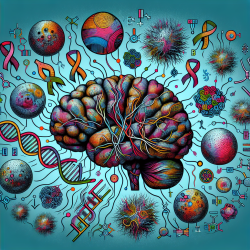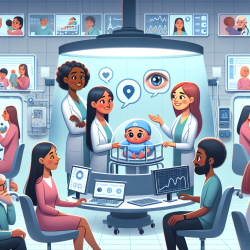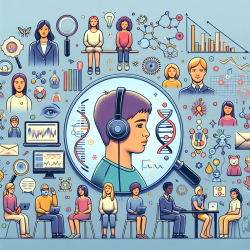Understanding CHRNA7 Duplication: Implications for Neurodevelopmental Disorders
In the realm of neurodevelopmental disorders, genetic variations play a crucial role in determining the onset and progression of various conditions. A recent study titled "Altered neuronal physiology, development, and function associated with a common chromosome 15 duplication involving CHRNA7" sheds light on the impact of CHRNA7 duplication on neuronal development and function. This research provides valuable insights for practitioners seeking to enhance their understanding and intervention strategies for neurodevelopmental disorders.
Key Findings of the Research
The study explores the effects of the 15q13.3 duplication involving the CHRNA7 gene, a genetic variation associated with a range of neuropsychiatric disorders. The research utilizes induced pluripotent stem cell (iPSC) models derived from individuals with this genetic duplication, including a boy diagnosed with autism and his clinically unaffected mother. These models were compared to unrelated controls to uncover cellular and molecular differences.
- Neuronal Development and Function: The study found that the affected proband (AP) exhibited disruptions in cellular physiology and neurodevelopment, including enhanced neural progenitor proliferation, impaired neuronal differentiation, and increased endoplasmic reticulum (ER) stress. These disruptions were not observed in the unaffected mother (UM) or control models.
- Gene Expression: The AP model showed dysregulated gene expression related to behavior, psychological disorders, and neuronal signaling pathways. In contrast, the UM model exhibited upregulated expression in many of these pathways, suggesting potential molecular compensation.
- Shared Functional Anomalies: Both AP and UM-derived neurons displayed increased action potential firing and elevated cholinergic activity, indicating shared functional anomalies despite differing clinical outcomes.
Implications for Practitioners
The findings from this research offer several implications for practitioners working with neurodevelopmental disorders:
- Personalized Intervention: Understanding the specific genetic and molecular underpinnings of disorders like autism can guide personalized intervention strategies. Practitioners can consider genetic testing to identify similar duplications in patients and tailor interventions accordingly.
- Pharmacological Approaches: The study highlights the potential for pharmacological agents to rescue certain neurodevelopmental anomalies. Practitioners should stay informed about emerging pharmacological treatments targeting specific genetic pathways.
- Further Research: Encouraging further research into the variable phenotypic penetrance of genetic duplications can lead to more effective diagnostic and therapeutic approaches. Practitioners can collaborate with researchers to explore new models and interventions.
Conclusion
This research underscores the complexity of genetic contributions to neurodevelopmental disorders and highlights the importance of personalized approaches in treatment. By leveraging insights from studies like this, practitioners can enhance their ability to address the unique needs of individuals with neuropsychiatric conditions.
To read the original research paper, please follow this link: Altered neuronal physiology, development, and function associated with a common chromosome 15 duplication involving CHRNA7.










